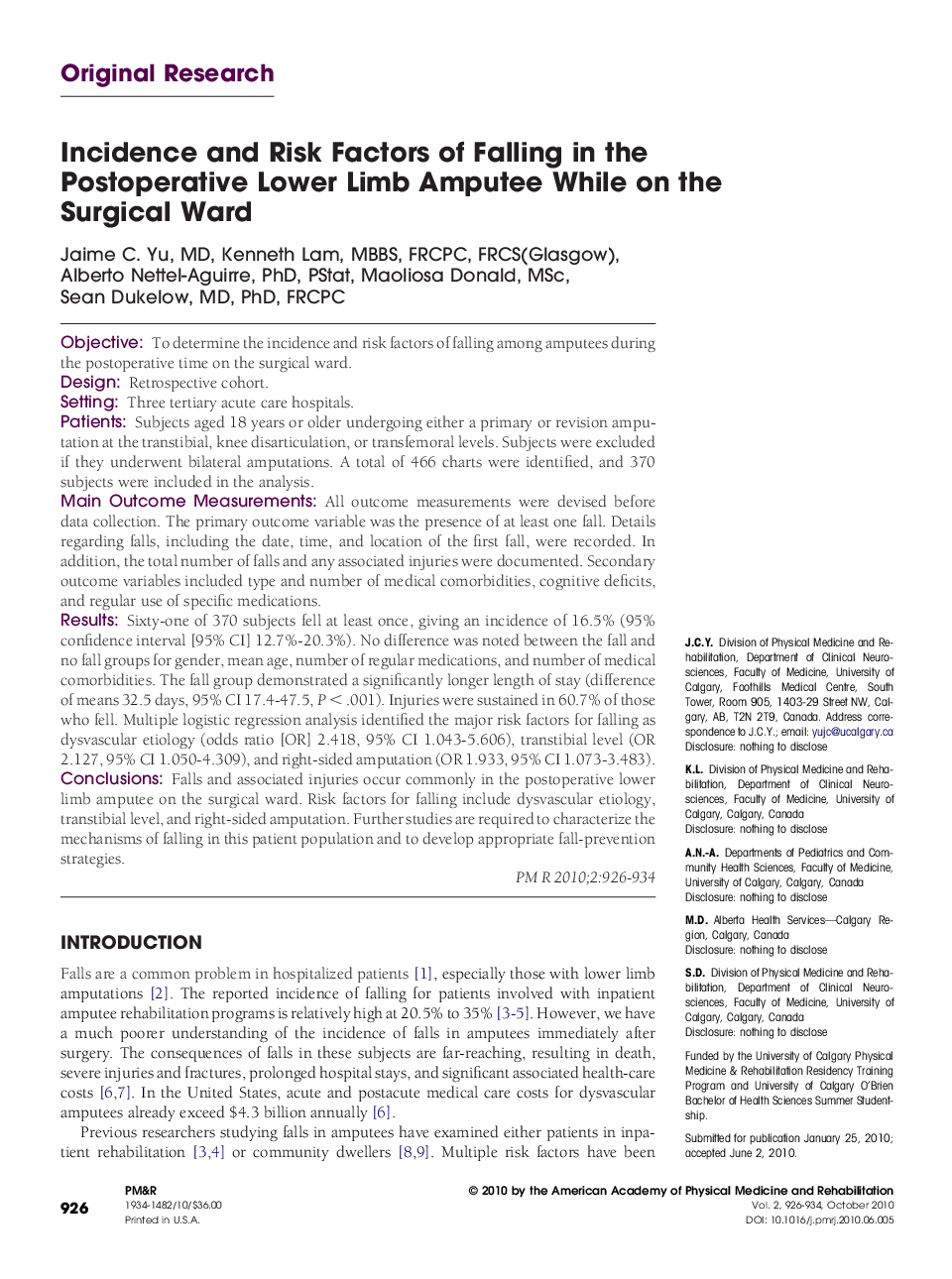| Article ID | Journal | Published Year | Pages | File Type |
|---|---|---|---|---|
| 2706271 | PM&R | 2010 | 9 Pages |
ObjectiveTo determine the incidence and risk factors of falling among amputees during the postoperative time on the surgical ward.DesignRetrospective cohort.SettingThree tertiary acute care hospitals.PatientsSubjects aged 18 years or older undergoing either a primary or revision amputation at the transtibial, knee disarticulation, or transfemoral levels. Subjects were excluded if they underwent bilateral amputations. A total of 466 charts were identified, and 370 subjects were included in the analysis.Main Outcome MeasurementsAll outcome measurements were devised before data collection. The primary outcome variable was the presence of at least one fall. Details regarding falls, including the date, time, and location of the first fall, were recorded. In addition, the total number of falls and any associated injuries were documented. Secondary outcome variables included type and number of medical comorbidities, cognitive deficits, and regular use of specific medications.ResultsSixty-one of 370 subjects fell at least once, giving an incidence of 16.5% (95% confidence interval [95% CI] 12.7%-20.3%). No difference was noted between the fall and no fall groups for gender, mean age, number of regular medications, and number of medical comorbidities. The fall group demonstrated a significantly longer length of stay (difference of means 32.5 days, 95% CI 17.4-47.5, P < .001). Injuries were sustained in 60.7% of those who fell. Multiple logistic regression analysis identified the major risk factors for falling as dysvascular etiology (odds ratio [OR] 2.418, 95% CI 1.043-5.606), transtibial level (OR 2.127, 95% CI 1.050-4.309), and right-sided amputation (OR 1.933, 95% CI 1.073-3.483).ConclusionsFalls and associated injuries occur commonly in the postoperative lower limb amputee on the surgical ward. Risk factors for falling include dysvascular etiology, transtibial level, and right-sided amputation. Further studies are required to characterize the mechanisms of falling in this patient population and to develop appropriate fall-prevention strategies.
